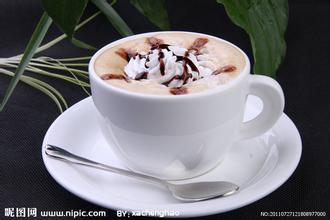A brief introduction to the Origin, Development, History and Culture of Fine Coffee beans in Fuyin Manor

The island of Sulawesi, located between Borneo and New Guinea, is sometimes called Celebes. The coffee produced on the island is full of grains and rich in flavor. The best coffee beans come from Kalossi and Rantepao in the southern part of the island. Among the many tastes of spleen, try Celebes Kalosi coffee.
On the whole, Indonesian coffee has a strong flavor, mellow taste, slightly syrup flavor and excellent acidity, and its two main export markets are Germany and Japan, which reflects the excellent quality of the coffee. What attracts consumers is the unique quality of its Arabica coffee beans. You can add milk or cream to high-quality Indonesian coffee without worrying about affecting its taste. Indonesian coffee is divided into six grades, the best of which is AP. But no one knows exactly what these two capital letters stand for.
When ships replaced sailboats, coffee produced on these islands faced the same problem as Indian coffee from Mysore-that is, consumers were so used to coffee affected by long-distance travel that they were reluctant to accept the taste of this "fresh" coffee. To solve this problem, the Indonesian government has tried its best to copy coffee affected by long-distance travel, and they have "stored" coffee beans for up to a year. However, what is not satisfactory is that the taste of this wetted coffee is not so widely accepted that it affects the good reputation of its coffee.
However, Indonesia's "stored" coffee, or "journey" coffee, is still produced today. Its sales brands are generally OldGovernment, OldBrown and OolJava.
Although Indonesia produces so much admirable coffee, it is puzzling that local residents prefer Turkish-style coffee to its famous European-style coffee in the mid-17th century. Coffee trees were introduced to Indonesia by the Dutch (some official sources believe that earlier). The first batch of coffee from Java was sold to Amsterdam in 1712. However, coffee trees in all plantations were destroyed by coffee rust in 1877, and Robart coffee trees had to be introduced from Africa to replace the original species. Today, only 6% of coffee beans and 10% of coffee beans are Arabian coffee beans. Indonesia is the world's leading producer of Robert's coffee, producing 6.8 million bags of coffee a year, with more than half of the coffee coming from small plantations, accounting for about 90 per cent of the total production.
Java produces exquisite aromatic coffee with relatively low acidity, delicate taste and good balance. Java coffee has a better aroma and acidity than coffee from Sumatra and Sulawesi. The best plantations in Java are Blawan, Jambit, Kayumas and Pankur. Java mocha is a mixture of Java coffee and Yemeni mocha coffee.
Sumatra, the second largest island in the Indonesian archipelago, is the center of Indonesia's oil industry, and its rubber and timber are also famous exports. However, the coffee in Sumatra is more eye-catching, which is similar to Java coffee, but with slightly heavier grains. The coffee beans of Mandheling and Ankola are also highly valued, and the former is even regarded as the most full-grained coffee beans in the world.
Java coffee beans are famous for their early Java coffee, which refers to Arabica coffee formerly grown on the island of Java. It has a strong aroma, low acidity, taste lubrication, mixed with mocha coffee, the resulting "Java mocha mixed coffee" was once popular and became synonymous with top coffee.
At that time, Java coffee sold to Europe was a very special kind of coffee. At that time, it was shipped to Europe and the United States by sailboat, and the distance was long and the speed was slow, so it took a lot of time to transport. In this case, the coffee seems to have undergone a special fermentation and has a very unique taste.
Later, when the ship replaced the sailboat, due to the shortened delivery time, people drank relatively fresh coffee beans. But people who are used to drinking Chen beans are not used to the fresh taste, so they desperately pursue old Java coffee, so that the Indonesian government and some businessmen deliberately store fresh beans in warehouses for one or two years and then sell them to consumers. In fact, compared with fresh beans, the acidity of aged Java beans is close to zero, but the flavor is more intense. Because of the long storage time, the increase in cost and the limited quantity, Java has always been a hot item in the coffee market. In the 1880s, 0 merchants deliberately tampered with some fresh Guatemalan or Venezuelan beans to imitate aged Java for high prices. It is intolerable that 0 merchants dye coffee beans to make them look more like old Java, but there is no doubt that the dyed chemicals are certainly toxic.
Java produces only a small amount of Arabica beans, most of which were imported from Africa after the rust disaster. This coffee has a strong bitter taste after roasting, but the aroma is extremely light. Although it has low acidity and delicate taste, it is rarely used for direct drinking. It is often used to mix mixed coffee, or to make instant coffee. Java coffee is produced in Java, Indonesia. It belongs to Arabica coffee. After baking, the bitter taste is extremely strong and the aroma is very light, without sour taste. The bitterness and mellowness of Java coffee, coupled with the sweetness of chocolate syrup, make Java coffee more mellow and palatable and very popular with women!
Among the Asian coffee-producing countries, Indonesia is a very noteworthy one. Indonesia is an island country in the Indian Ocean, the islands are distributed on both sides of the equatorial line, of which three islands: Java, Sumatra and Sulawesi produce the world's important coffee. In the mid-17th century, the Dutch brought coffee trees to Ceylon (Sri Lanka) and Java, Indonesia. In the 18th century, Indonesia became a major producer of coffee, and almost all of its high-quality Arabica coffee was supplied to Europe. But by the 19th century, coffee rust, which appeared in Ceylon in 1869, also affected Indonesia. By 1877, most of the coffee fields on the Indonesian islands had been damaged by rust, and the Dutch had to import other coffee varieties from Africa, namely Romsda coffee. It is more resistant to diseases and insect pests, but its quality is inferior. About 90% of Indonesian coffee is Romda beans, about 6.8 million bags a year, and less than 10% of the beans are Arabica coffee. Java coffee, the oldest producing area, has been famous since the glory days of Indonesian coffee in the 18th century. Java coffee is still reminiscent of quality and delicacy, when the most famous mix is Java coffee with Yemeni mocha. In addition, Java also has a very famous old coffee Aged coffee, or monsoon coffee Monsooned coffee.
Sumatra, the most legendary producing area, well-known coffee logos include Mandheling Mantenin, Lintong Lintong and Gayo Mountain Gayusan.
Sulawesi Island, famous coffee includes Delaga Toraja.
In addition, Bali, Flores and Timor are also important producing areas.
Coffee planting mode
In the Dutch colonial era, coffee was mainly grown in large estates. After World War II, it experienced the process of nationalization and the movement of independence. Today, about 90% of the coffee produced in Indonesia is produced by small farmers.
Coffee variety
At first, Indonesian coffee was Arabica, and the Arabica manor was destroyed by a leaf rust disaster at the end of the 18th century. at first, the Dutch tried to grow Liberian seeds, and later, they began to plant Robsta seeds on a large scale.
At present, Arabica accounts for about 10-15% of the coffee produced in Indonesia, and the rest is Robusta. Although Liberika is productive, it is basically not included in the coffee trade.
Sumatra, the second largest island in the Indonesian archipelago, is the center of Indonesia's oil industry, and its rubber and timber are also famous exports. However, the coffee in Sumatra is more eye-catching, which is similar to Java coffee, but with slightly heavier grains. Coffee beans from Mandheling and Ankola have also received a lot of attention, and the former is even known as the world's fullest coffee beans.
Important Notice :
前街咖啡 FrontStreet Coffee has moved to new addredd:
FrontStreet Coffee Address: 315,Donghua East Road,GuangZhou
Tel:020 38364473
- Prev

A brief introduction to the flavor, taste and aroma characteristics of fine coffee beans in Fuyin Manor with chocolate flavor
When ships replaced sailboats, coffee produced on these islands faced the same problem as Indian coffee from Mysore: consumers were so used to coffee affected by long trips that they were reluctant to accept the taste of the fresh coffee. In order to solve this problem, the Indonesian government tried its best to copy coffee affected by long-distance travel, and they stored coffee beans.
- Next

The more mellow the more slippery the Fuyin Manor fine coffee beans variety planting market price profile
Arabica now accounts for about 10-15% of Indonesia's coffee production, with the rest being Robusta. Although Liberica is produced, it is not included in the coffee trade. Sumatra, the second largest island in Indonesia's archipelago, is the center of Indonesia's oil industry. Rubber and timber on the island are also famous export commodities. But Sumatra coffee is even more impressive.
Related
- Does Rose Summer choose Blue, Green or Red? Detailed explanation of Rose Summer Coffee plots and Classification in Panamanian Jade Manor
- What is the difference between the origin, producing area, processing plant, cooperative and manor of coffee beans?
- How fine does the espresso powder fit? how to grind the espresso?
- Sca coffee roasting degree color card coffee roasting degree 8 roasting color values what do you mean?
- The practice of lattes: how to make lattes at home
- Introduction to Indonesian Fine Coffee beans-- Java Coffee producing area of Indonesian Arabica Coffee
- How much will the flavor of light and medium roasted rose summer be expressed? What baking level is rose summer suitable for?
- Introduction to the characteristics of washing, sun-drying or wet-planing coffee commonly used in Mantenin, Indonesia
- Price characteristics of Arabica Coffee Bean Starbucks introduction to Manning Coffee Bean Taste producing area Variety Manor
- What is the authentic Yega flavor? What are the flavor characteristics of the really excellent Yejasuffi coffee beans?

